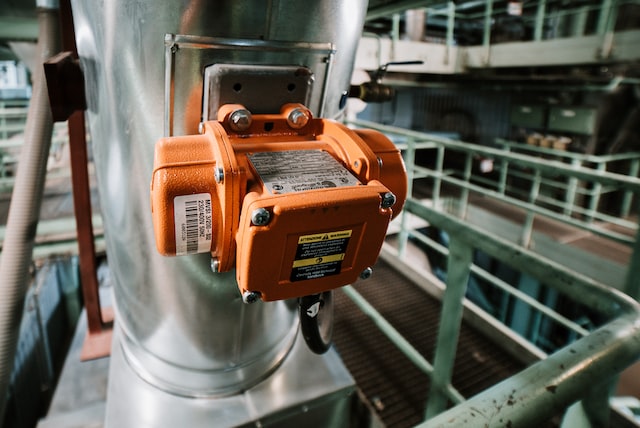Common Air Compressor Products
August 25, 2022Listed below are some common Air Compressor Products Florida. Some air compressors are suitable for remote locations, and others are perfect for production line emergencies. They are compact, robust, lightweight, and oil-free. Depending on your requirements, you can choose from rotary screws, reciprocating, or any combination of these factors. Listed below are some of the advantages of each type of air compressor. Hopefully, you’ll be able to choose the best air compressor for your application.
Diaphragm or Sliding-vane Compressors
A diaphragm or sliding-vane air compressor is a reciprocating compressor that uses a flexible membrane instead of pistons. These are excellent choices for handling toxic and explosive gases and can be built into an in-line design or V-shaped for greater flexibility. However, their output and pressure are limited, making them primarily suitable for light-duty applications. In this article, we’ll take a closer look at the pros and cons of each type of compressor.
Diaphragm and sliding-vane air compressors feature low noise, smooth running, and little maintenance compared to reciprocating piston air compressors. As a result, these units are particularly suitable for oil-free compressed air and vacuum production applications and are generally considered more reliable than reciprocating piston compressors. For these reasons, the most popular choice is a diaphragm and sliding-vane air compressors.
Piston Compressors
There are many different types of piston air compressors on the market. One of the most common types is the single-stage piston air compressor. However, a two-stage piston air compressor has many benefits, making it a good choice for larger projects. If you’re unsure about which type is right for you, here are some pros and cons of both types. In general, a two-stage piston air compressor is more efficient and will be more cost-effective.
A piston compressor produces pressure by spinning an impeller, which reduces the volume of a gas. There are several uses for a piston compressor, including woodworkers, mechanics, and contractors. If you’re planning on increasing the air pressure of a piston air compressor, you need to reduce the compartment size. Otherwise, a reciprocating cylinder piston compressor will overwork itself and fail to produce the desired amount of air pressure.
Rotary Screw Compressors
When it comes to compressed air, rotary screw compressors are the most commonly used type. These units are pressurized systems made up of many interconnected parts. They are used to compress atmospheric air and then transfer it to connected tools and machines. Because of their high efficiency, they are ideal for a wide range of applications. One key benefit of rotary screw air compressors is that they can be used continuously and have virtually no downtime.
While rotary screw air compressors are standard in industrial settings and extensive manufacturing facilities, they are also available for smaller applications. For example, in the oil and gas industry, screw-type air compressors are used for gas lift, injecting high-pressure gases into a formation to increase hydrocarbon production. Other uses for screw air compressors include gas pipeline pigging, general maintenance, pneumatic drills, hydraulic tools, and general maintenance.
Rotary Lobe Compressors
A rotary lobe compressor is a type of positive displacement machine. Unlike reciprocating compressors, rotary lobes do not require valves and are much lighter than reciprocating compressors. They also do not exhibit shaking forces, making them easier to install and maintain. Depending on their design and needs, rotary lobe compressors can be single or multiple-rotor units.
Rotating lobe compressors are also standard air compressor products. The main difference between these two air compressors is their design. They are typically smaller and lighter than vane compressors and use offset vanes to compress air. Because these compressors are less wear-and-tear than vane, they are more energy-efficient for low to moderate-pressure applications. However, their smaller capacity makes them less suitable for high-pressure applications or applications requiring constant airflow.
Centrifugal Compressors
While most air compressors work by pumping air, some do not. These types of air compressors use centrifugal force to increase pumping efficiency. Because they cannot use cylinders, pistons, or valves, centrifugal air compressors can run at extremely high speeds and are much more efficient than positive displacement air compressors. However, these units are also more extensive and expensive than other types.
Typical centrifugal air compressors feature a simple pipe like the inlet but can also be complex depending on the application. They may also feature a shrouded port, annular, or bifurcated duct. These compressors also feature movable and stationary guide vanes to increase gas pressure. They also often feature instrumentation to measure temperature and pressure.
Rotary Vane Compressors
Rotary vane compressors are used in almost every manufacturing process, from welding to paper pressing. They also serve as air-operated metal working tools. These products also provide the power necessary for many industrial cooling and material handling operations. Additionally, rotary vane compressors play a key role in robotics, an advanced manufacturing area requiring highly-efficient air compressor systems. This article will discuss some common advantages of rotary vane compressors and their use in industrial applications.
These compressors are typically available in the Maxima Series and Optima Series. Their applications are almost limitless and are as diverse as the industries themselves. Many industries rely on rotary vane compressors, from food and beverage product handling to vacuum systems in packaging. These units are also capable of filling cakes. But there are a few factors to consider before making a purchase decision.



